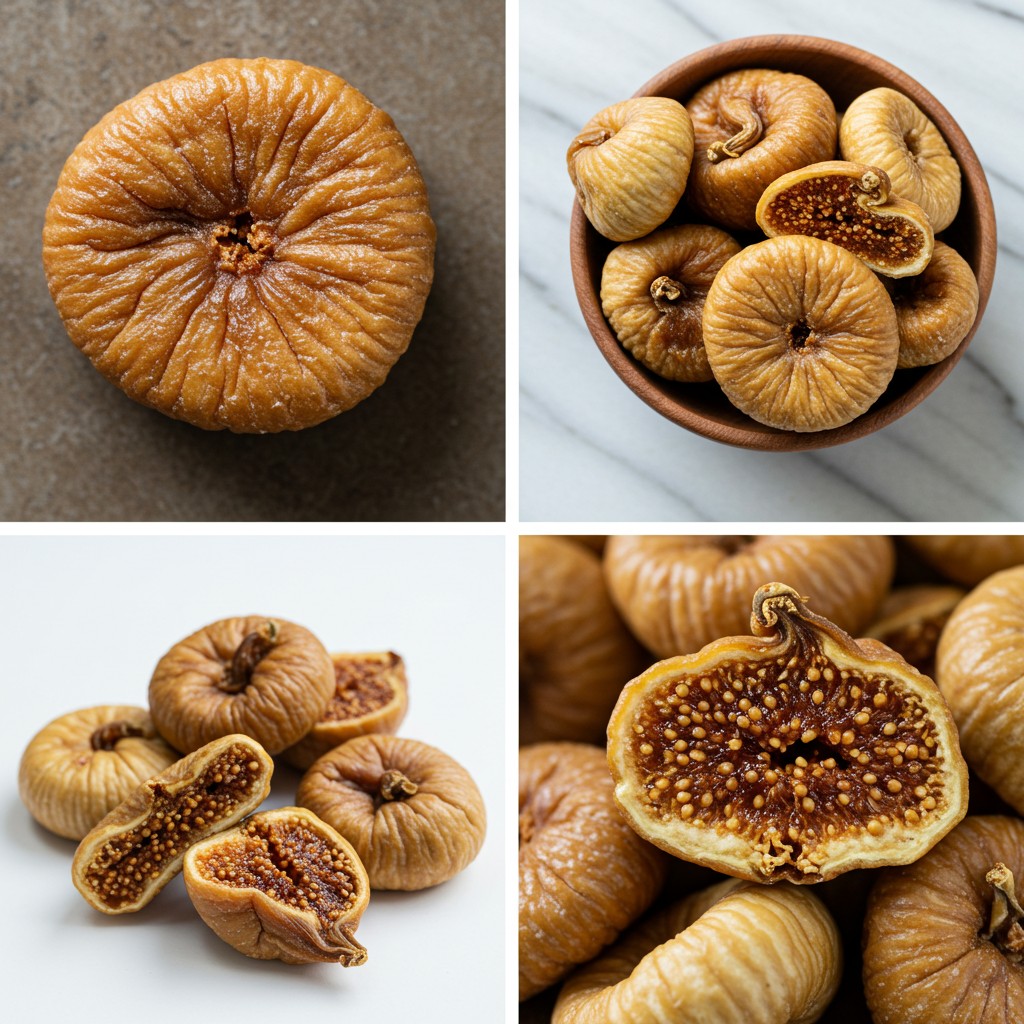-
- Wash the figs: Rinse them gently under cold running water to remove any dirt or residue.
-
- Remove stems: Trim off the stems using a sharp knife.
- Slice or leave whole: You can cut the figs in half to speed up drying or leave them whole for a chewier texture.
- Pre-treatment (Optional): To prevent discoloration and improve preservation, dip the figs in a lemon juice and water mixture (1:1 ratio) for a few minutes.
Methods for Drying Figs
There are several ways to dry figs, and the method you choose depends on your preference, available resources, and weather conditions.
1. Sun Drying (Traditional Method)
Sun drying is the most natural way to dry figs and retains their flavor well.
-
- Place a drying rack or a mesh screen in a sunny location with good airflow.
-
- Arrange the figs in a single layer with space between each piece.
- Cover the figs with a fine mesh or cheesecloth to protect them from insects and dust.
- Turn the figs every day to ensure even drying.
- Depending on the climate, it can take 3-5 days for the figs to dry completely.
- When the figs are leathery and no longer sticky, they are ready.
2. Oven Drying (Quick Method)
If sun drying is not an option, you can use an oven to dry figs efficiently.
-
- Preheat the oven to 140-160°F (60-70°C).
- Line a baking sheet with parchment paper and place the figs cut side up.
- Keep the oven door slightly open to allow moisture to escape.
- Bake for 6-12 hours, checking regularly to prevent over-drying.
- The figs are ready when they have a chewy texture and are no longer sticky.
3. Using a Dehydrator (Best for Consistency)
A food dehydrator provides the most controlled environment for drying figs.
-
- Arrange figs in a single layer on the dehydrator trays.
- Set the temperature to 135°F (57°C).
- Dry for 8-24 hours, depending on fig size and moisture content.
- Rotate the trays periodically for even drying.
- When the figs are leathery and slightly pliable, they are done.
How to Store Dried Figs
Once your figs are dried, proper storage is essential to maintain their quality:
-
- Cool and Dry Storage: Place dried figs in airtight containers, glass jars, or vacuum-sealed bags.
- Refrigeration: If you live in a humid climate, store figs in the refrigerator to prevent mold growth.
- Freezing: For long-term storage, dried figs can be frozen for up to a year.
- Label and Date: Always label the storage container with the date to keep track of freshness.
How to Use Dried Figs
Dried figs are versatile and can be used in many ways:
-
- Enjoy them as a healthy snack.
-
- Add them to cereals, yogurt, or oatmeal.
- Use them in baking, such as cakes, muffins, and bread.
- Soak them in warm water to rehydrate for use in cooking or making jams.
- Blend them into smoothies for a natural sweetener.
Tips for the Best Dried Figs
-
- Always dry figs in a well-ventilated area to prevent mold.
- Store figs away from direct sunlight to maintain their color and flavor.
- If figs feel too hard after drying, they can be softened by steaming or soaking in warm water before use.
- Avoid drying figs at high temperatures, as this can cause them to become too hard and lose flavor.
By following these simple steps, you can enjoy delicious dried figs any time of the year. Whether you use the sun, an oven, or a dehydrator, drying figs at home is an easy and rewarding process that ensures you always have a supply of this nutritious fruit on hand.

